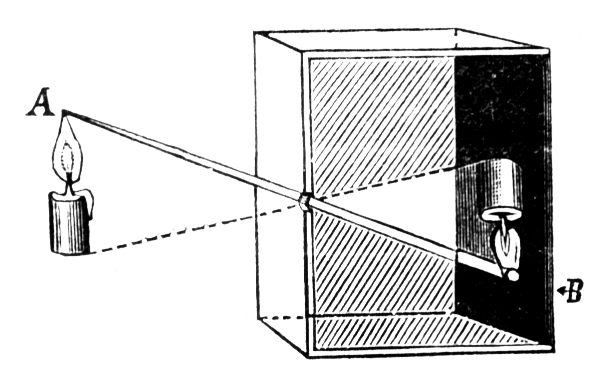When I was a kid, I once saw a pinhole camera, otherwise known as a camera obscura. There was a lightproof, small room. We seated ourselves on the floor facing a wall, and in the wall behind us there was a tiny hole. The activity outside the room was projected upside down onto the wall in front of us. The tiny hole, or aperture, reflected that scene beyond our room quite clearly. But because the image was upside down, it was still hard to fully comprehend the images. Our orientation was wrong, and it took a while to adjust to the different perspective and make sense of what we were being shown.
I had wanted to see one of these pinhole cameras since I had read a description of one in a book, maybe Cannery Row or Sweet Thursday by John Steinbeck, and he describes one of the main characters dancing across the wall upside down of the protagonist’s laboratory. So here I was with the chance to see a camera obscura and experience this for myself.
At first, when we sat down, we were just in the dark in a small room. But once the aperture was revealed, and our eyes adjusted to the dark so that we could see, we could see something new, something outside and beyond us, a new truth, dancing just as Steinbeck described, upside down, Stare at the images long enough, and eventually I was the one who felt like I was upside down. I almost felt like I was about to fall on my head, like I was a bat hanging from the roof of a cave, like when my elementary gym teacher had us compete with each other to see who could hold a headstand the longest.
Perhaps Jesus is like the aperture in a camera obscura. He is the opening between two worlds and two truths. He shows us things that are outside our perception, things which we have walled ourselves off from. He is the means through which we can see that which is eternal. But what he describes, what he projects, makes us feel disoriented, since it literally turns the world and the world’s workings upside down. He is God incarnate (a paradox to our cynical minds), the Son of Man who moves between heaven and Earth and tries to translate to our limited understanding what we are called to be and how we are called to live.
Look how he sets us on our heads in this observation: “As they were going along the road, someone said to him, “I will follow you wherever you go.” And Jesus said to him, “Foxes have holes, and birds of the air have nests; but the Son of Man has nowhere to lay his head.”
This line in our gospel for this coming Sunday reveals the very real fears a rational person would have, either then in Jesus’s time or now, about following Jesus. We want to follow him enough that we get the benefits of eternal life. We don’t want to have to lose anything as precious to us as our homes or our families or friends. Who would?
This is a very hard teaching to most of us. We are attached to the two lives most of us have, to the lives we have built, and to the lives we plan for ourselves. We have PLANS, Jesus! Can we get back to you later about that taking up our cross stuff? And yet Jesus asks us to give these up to follow him, to be his true disciples rather than merely his fans or friends or hangers-on.
Of course we want what Dietrich Bonhoeffer derisively called “cheap grace”– Jesus has saved me, the gift is freely given, so let’s just go about our business with that nifty little “get out of jail” card in our wallets, keeping our hearts and minds and souls and actions safely insulated from any sacrifice of WHAT WE WANT and WHAT WE HAVE PLANNED. Like Peter, we want Jesus to be who WE want. We want our life in Christ to be able to be fit easily into our schedule.
Then some of us interpret this teaching as an “either-or” proposition. Are we walled into that little room forever? Or can we supposed to DO something with this knowledge right here where we are? Could it be that Jesus is calling us to live our lives, yes, but grounded in something more eternal, more true than either a monastic denial of the world or a callous embrace of the world’s principles while claiming that lifeline of salvation. The image of salvation that Jesus projects before us is of course rooted in this world but focused on bringing the eternal Love into a world that sometimes we have made so broken? Calling us to reorient ourselves on the compass of what is good and what is true and what is beautiful, to see that we live in the midst of God’s kingdom?
We see through Jesus what is real and what is eternal. There is a reason why he refers to himself in John’s gospel as “the Way, and the Truth, and the Life.” Yes, he shows us how to live partly through his death– a further paradox. If we spend enough time changing contemplation into action, we can open the door of that camera obscura that we usually spend most of our lives in and carry our new, reoriented understanding of what the place we are called to inhabit in the kingdom of heaven right here where we are.
The Rev. Leslie Scoopmire is a retired teacher and a priest in the Diocese of Missouri. She is priest-in-charge of St. Martin’s Episcopal Church in Ellisville, MO. She posts daily prayers at her blog Abiding In Hope, and collects spiritual writings and images at Poems, Psalms, and Prayers.

